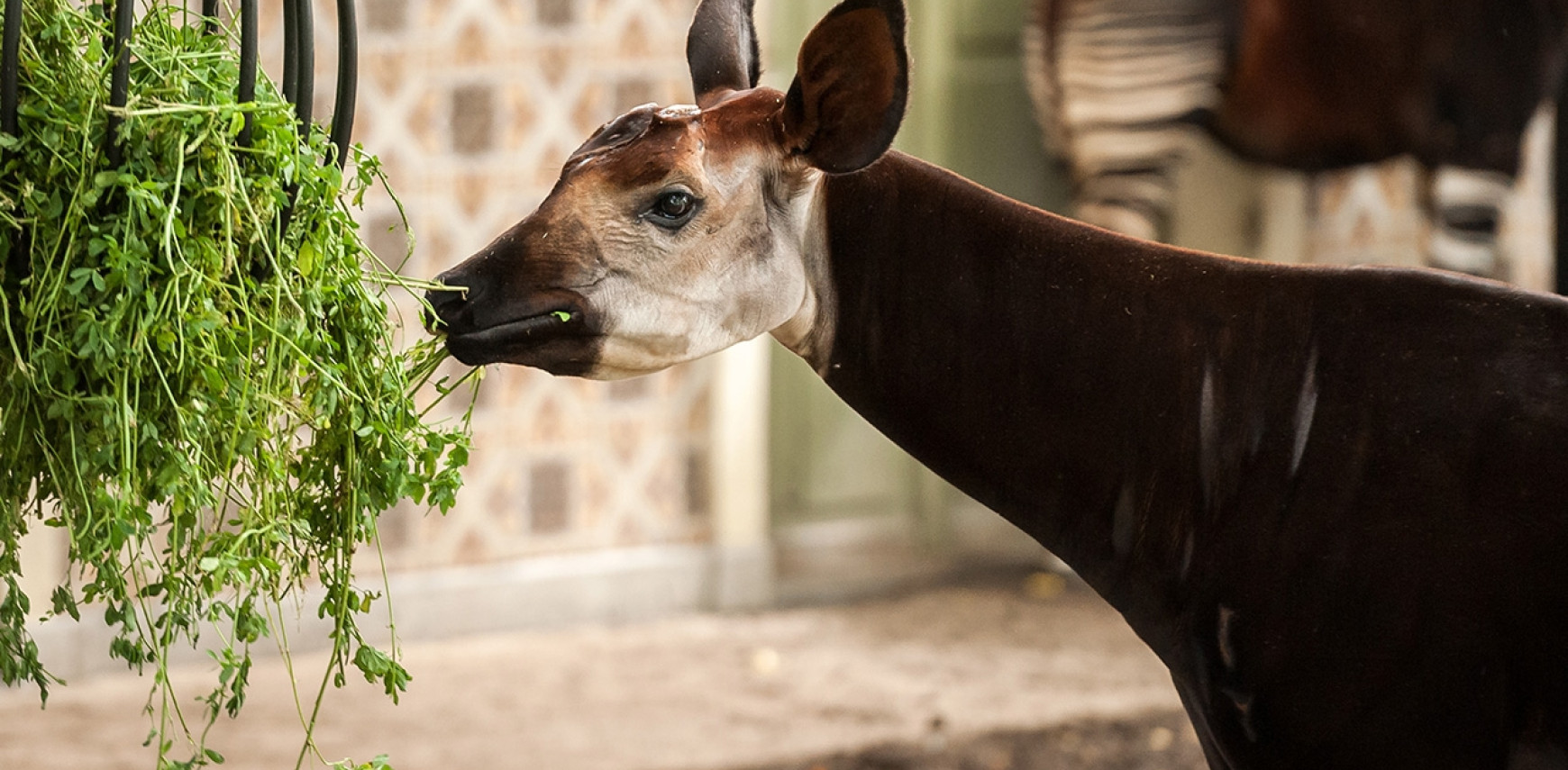Hooking up stripes
Okapis are beautiful endangered animals. In their homeland, the Congo, there are only about 15,000 of them left. ZOO Antwerp and ZOO Planckendael manage the international pedigree records and coordinate the European breeding program. We are the go-to for advice on these animals, but we are also the matchmakers. Who should breed with whom, to maintain genetic diversity to the greatest extent possible and help the species survive? Our greatest asset is the male okapi Bondo at ZOO Antwerp. Of all okapis in captivity worldwide, he possesses the most important genes. That means that as many females as possible should hook up with him. With the help of the computer program PMx, animals, including okapis, are paired up based on their genetics.
HOW EXACTLY DOES THE RESEARCH WORK?
Okapi genetics is largely unexplored territory. For a recent scientific study aiming to get a better picture of the genetic diversity of okapis in captivity and in the wild, a team of researchers from ZOO Antwerp, the London Zoo and the Cardiff University, among others, isolated okapi DNA belonging to animals in the European and American breeding program. In order to collect enough DNA samples from the population in the wild, stool samples collected in the Congolese rainforest were used. What’s more, samples were taken from semi-wild okapis in the education station at the Okapi Conservation Project headquarters, in Epulu, in the Congolese Ituri Rainforest.
Small bits of skin, skeletal and cranial tissue from okapis in museum collections are transferred to our lab
Even in various museums, including the Royal Museum for Central Africa in Tervuren, our scientists set out to collect DNA. Small bits of skin, skeletal and cranial tissue from okapis in the museum’s collections were transferred to the ZOO Antwerp laboratory. The okapis’ remains were returned to the archives, in the basement of the museum, where some of them have been stored for over one hundred years. What’s more, it’s no coincidence that the museum in Tervuren houses the world’s largest collection of okapis. Okapis are only found in the former Belgian Congo. In the early twentieth century, they were shipped from there to Belgium. When these samples were collected, requests for additional samples were submitted to museums in Chicago, London, Paris and Copenhagen.
Based on the results, we recommend keeping the population of okapis in captivity as a genetic backup
All of this DNA material we’ve gathered is necessary to see how well the population in captivity represents the population in the wild and what those conclusions mean for the management of okapis in zoos. This genetic assessment of the ex situ okapis, or the population in captivity, along with the detailed evaluation of the genetic structure of populations in the wild, or in situ okapis, shows that the genetic variation of okapis in the wild and in zoos is largely comparable, but that there are noticeable genetic differences.
What impact does thE research have?
Our study emphasizes that even carefully managed breeding programs with very detailed pedigree records do not sufficiently guarantee continued genetic variation, and that additional genetic research is of the utmost importance. Based on the results, we recommend keeping the okapis in captivity as a genetic backup, but further genetic research is needed to determine how these populations are best managed. One concrete recommendation from ZOO Antwerp is to exchange the animals between European and American zoos on a regular basis. This research makes a significant contribution to the action plan for preservation of the okapi.
The okapi is found exclusively in the Democratic Republic of the Congo (DRC). Thus, we refer to it as an endemic species. Recently, this animal was reclassified as an endangered species on the International Union for Conservation of Nature’s list (IUCN Redlist).
Preferably, we want the animals in a breeding program to be genetically representative of their species in its original habitat
Breeding programs for endangered species increasingly use molecular genetics, the science dedicated to the study of the structure and function of genes at the molecular level, in order to manage the population in captivity. Genetic research can, for instance, be very useful in researching pedigree, filling in missing details in the pedigree, or comparing the amount of genetic diversity in populations in captivity with populations in the wild. Preferably, we want animals in a breeding program to be genetically representative of their species in its original habitat, because that offers a way of maintaining the original evolutionary potential of the species. Imagine if, one day, we needed to reintroduce a species to the wild which had otherwise died out. Then we’d have animals available perfectly adapted to the conditions in the natural habitat. Thus, animals in captivity truly form a genetic backup for the wild populations.

